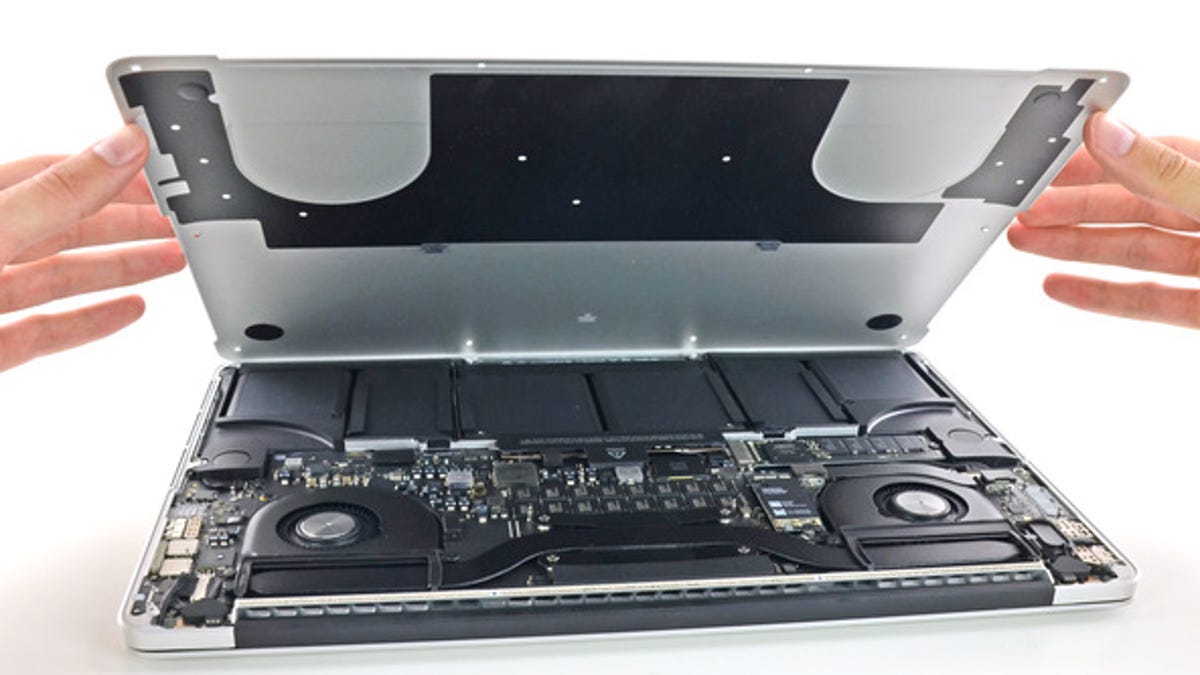MacBook Pro Retina 2013 teardown: Tough fix, good parts
The new 15-inch and 13-inch MacBook Pro Retina models have a lot going for them, but repairability isn't one of them.

It should come as no surprise that the 0.7-inch-thick 15.4-inch and 13.3-inch MacBook Pro Retina models aren't easy to repair. iFixit said this week their repairability is still rock bottom.
Thin laptops, especially those from Apple, aren't known for easy accessibility or repair as their cases are often completely sealed.
That hasn't changed with the 2013 MacBook Pro Retina.
Both the "="" rel="follow" target="_self">13-inch and 15-inch MBP got a repairability score of 1 out of 10 (10 being the easiest to repair) from iFixit, matching the 13- and 15-inch MacBook Pro Retina 2012 models.
You can thank Apple's penchant for proprietary pentalobe screws, RAM that's soldered to the logic board, a proprietary solid-state drive (which, by the way, has changed to a PCIe format), and a booby-trapped battery. (Chances are high the user will "shear" the trackpad cable if battery removal is attempted, iFixit said.)
That's the bad news. The good news is the "Haswellification" of the MBP Retina, referring to Intel's new power-efficient fourth-generation Core processor with Iris Pro graphics.
"The 15 [inch] MBPr now has a sleekified heat sink with just a single thermal pad, thanks to the more closely integrated GPU," iFixit said.
Haswell, among other tweaks, also delivers an extra hour of battery life with the same capacity cells.
On the 15-inch MBP, Apple is again using DRAM from Elpida (now owned by Micron Technology). In this case, the Elpida J4208EFBG 512 MB DDR3 SDRAM (16 chips for 8GB total).
Also of note is an Intel DSL5520 Thunderbolt 2 Controller on both the 13-inch and 15-inch models.
The 13-incher is notable for the use of a lot of components from U.S.-based companies. No Samsung parts in sight here.
Those parts include, in addition to the Intel CPU and GPU:
- DRAM: Micron DDR3L SDRAM -- a total of 4GB.
- Solid-state drive: SanDisk 128GB SSD.
- Controller: Marvell Semiconductor SSD Controller.
- Microcontroller: Texas Instruments Stellaris microcontroller.
- Programmable logic: Cypress "Programmable System-on-Chip."
Almost overnight, Micron Technology has become a major supplier to Apple, supplanting Samsung in effect. The Boise, Idaho-based chipmaker supplies a variety of DRAM and solid-state drives for MacBooks.
Together, system memory and the SSD compose a big chunk of logic board real estate as well as cost.
And with Micron's purchase of Japan-based Elpida in July, it has become a major supplier of memory for the iPhone.
Update, 8:56 a.m.: This post has been updated with additional teardown data about the 13.3-inch MacBook Pro Retina.

